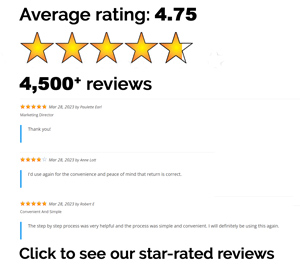Becoming a homeowner is an exciting time in your life. No more living with your parents or writing checks to a landlord for a place you’ll never own. This place is all yours and it comes with numerous tax benefits. However, claiming all the credits and deductions you qualify for can be tricky. Here are the most common mistakes new homeowners make on their taxes.
Deducting the wrong year’s property taxes
Your property taxes are deductible in the year you paid them. The concept seems simple enough, but many people still deduct the wrong year’s property taxes anyway. What confuses many homeowners is the fact that some taxing authorities work a year behind. So, you may not be billed for your 2023 property taxes until 2024. No matter what date is on your bills, make sure you only write down the amount of property taxes you actually paid for the year.
Note: The tax law limits the amount of property AND state and local taxes that can be deducted on your tax return to just $10,000.
Confusing the escrow amount for your actual taxes paid
Many lenders escrow funds to cover your property taxes but you cannot deduct the full escrow balance. There’s a strong possibility that the amount you paid into the account was slightly different from what your actual property taxes were. Before the tax season begins, your lender will send you a form 1098 which will tell you the amount you’re allowed to deduct on your tax return.
Claiming too much for the mortgage interest deduction
If you itemize, you can deduct the interest you paid on a mortgage for your primary residence or second home. This includes a house, condominium, co-op, mobile home, house trailer or a boat. Prior to the Tax Cuts and Jobs Act of 2017, homeowners were allowed to deduct the interest paid on mortgages up to $1 million ($500,000 for married filing separately). However, the deduction is no longer as valuable. The cap has been reduced to $750,000 ($375,000 for married filing separately) if you purchased your home after December 15, 2017.
Missing out on the home office deduction
Millions of Americans work from home at least half of the time. Some people are employed by companies that allow them to telecommute, while others simply work for themselves. If you are self-employed and use part of your home strictly for business purposes, you can save big on your taxes by taking the home office deduction. The deduction applies to all types of homes and can be claimed by homeowners or renters. The easiest way to calculate your deduction is to use the simplified option. With this method you can claim $5 per square foot for up to 300 square feet of your home, or up to $1,500 per year. The home office deduction often triggers an audit so be sure to keep accurate records.
Not keeping track of home-related expenses
It’s always a good idea to save and organize your tax documents regularly just in case you get audited. You need to be able to prove to the IRS that you’re entitled to the tax deductions you’ve claimed. Another good reason to hold on to your home improvement receipts is because you’ll need them to calculate your profits when you sell your home. Typically, you can exclude capital gains up to $250,000 if you’ve lived in the home for at least two of the last five years. Anything above that amount is taxable.




